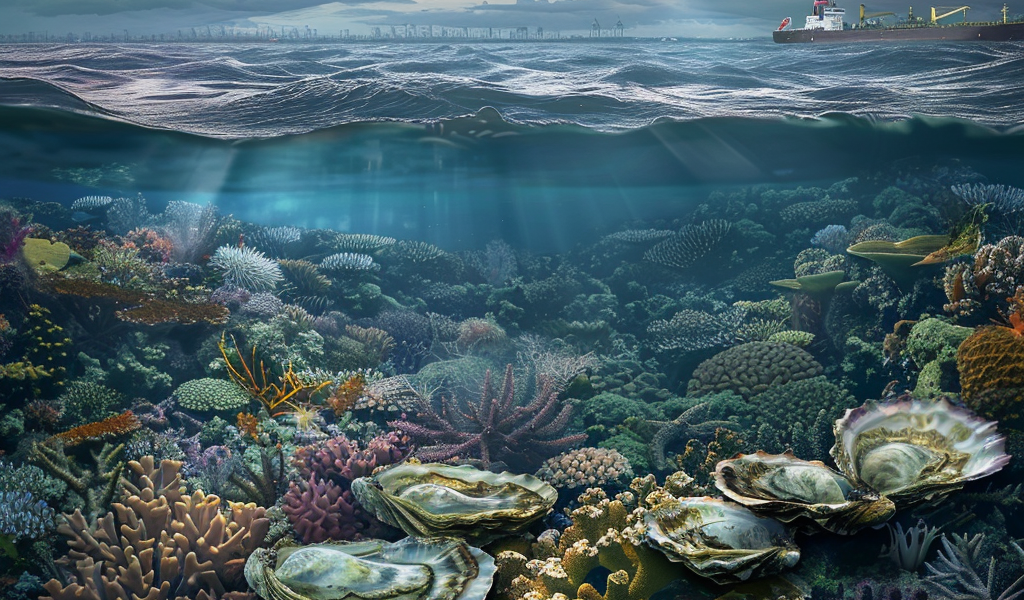Recent research conducted by scientists at the University of Adelaide has unveiled concerning insights into the impact of human-generated noise on marine ecosystems, particularly focusing on native oysters. The study highlights how increasing noise pollution in oceans is disrupting the natural acoustic cues that baby oysters rely on to settle in their habitats.
Dr. Brittany Williams, the lead author of the study, emphasized the significance of natural sounds in the marine environment. “The ocean’s natural sound is gradually hushing due to habitat loss, leading to a quieter natural environment increasingly drowned out by the crescendo of man-made noise pollution,” she explained. This shift in soundscapes can have detrimental effects on various marine organisms, especially those in their larval stages.
Oysters, like many marine creatures, depend on sound to navigate their surroundings, communicate, and find suitable locations for settlement. However, the research indicates that anthropogenic noise—stemming from activities such as shipping, construction, and industrial operations—poses a substantial threat to these vital processes. The study, published in the Proceedings of the Royal Society B, sheds light on the broader implications of noise pollution, which can interfere with not only the recruitment of oysters but also the overall health of marine ecosystems.
The research team found that marine organisms are particularly susceptible to the increasing levels of human noise, as they use sound for a variety of essential activities. These include avoiding predators, locating food, and finding mates. Dr. Dominic McAfee, another researcher involved in the study, noted that previous work had shown that innovative acoustic technology could aid in oyster recruitment for habitat restoration projects. However, this new study reveals limitations to this approach.
In areas where human noise pollution is prevalent, the use of speakers designed to enhance natural sounds did not result in increased larval recruitment of oysters. This finding suggests that the overwhelming presence of anthropogenic noise can obscure the intrinsic sounds of the ocean, leading to significant consequences for the vitality and resilience of marine ecosystems.
Despite these challenges, the researchers remain hopeful regarding the potential of acoustic enrichment techniques. Dr. Williams pointed out that in less trafficked areas with minimal human-generated noise, these methods appear to enhance the recruitment process, which is crucial for the success of restoration efforts. This indicates that while urbanized and noisy coastal environments present hurdles, there are still opportunities for effective conservation strategies in quieter regions.
The study underscores the urgent need for conservationists and policymakers to address the growing issue of ocean noise pollution. As human activities continue to encroach upon marine environments, understanding and mitigating the impacts of noise on marine life becomes increasingly important. The findings serve as a call to action for more comprehensive studies and initiatives aimed at preserving the delicate balance of marine ecosystems and ensuring the survival of species like oysters.
As the conversation around environmental conservation evolves, researchers are advocating for greater awareness of the effects of noise pollution on marine life. By prioritizing the protection of natural soundscapes and implementing measures to reduce anthropogenic noise, there is potential to foster healthier and more resilient marine ecosystems.
In conclusion, the research from the University of Adelaide highlights a critical intersection between human activity and marine biology, revealing how our actions can inadvertently disrupt the natural processes that sustain ocean life. As we continue to explore the complexities of marine ecosystems, it becomes clear that preserving the acoustic integrity of our oceans is essential for the future of marine biodiversity.





